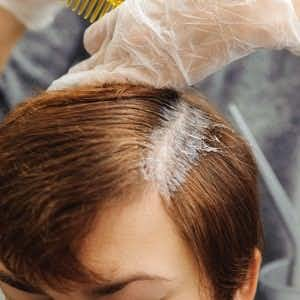
For most people concerns about environmental exposures and cancer risks are abstract, something that other people worry about. For this reader the connection between hair dye and bladder cancer is personal.
Q. I have T1 bladder cancer and am being treated with BCG immunotherapy.
I dye my hair dark brown every four weeks, as I have been for 20 years. I heard that hair dye is linked to bladder cancer. Should I stop using color?
A. Your question is surprisingly difficult to answer. For decades epidemiologists have been debating whether hair dye increases the risk of cancer. The problem is that studies are often contradictory.
Epidemiological Research:
One large meta-analysis (Annals of Epidemiology, Feb., 2014) concluded that there was no excess bladder cancer risk from using hair dye.
The Italian authors noted:
“Despite considerable research, the issue of hair dyes and bladder cancer is still open to discussion…Compared with no use, no association was observed for the highest categories of duration of use and lifetime frequency of use of both any type of dyes and permanent dyes. The pooled RR [relative risk] from four studies reporting results for use of dark-colored dyes was 1.29. This meta-analysis allows to definitively exclude any appreciable excess risk of bladder cancer among personal hair dye users.”
The authors characterize the RR (relative risk) of dark-colored hair dyes as hardly “appreciable” though 1.29 represents a 29% increased risk in those four grouped studies. That said, we accept their conclusion that hair dye use by consumers appears not to be related to bladder cancer.
What About Hairdressers?
Hairdressers, on the other hand, had an increased risk for bladder cancer attributed to their exposure to hair dyes (Occupational and Environmental Medicine, May, 2010).
The authors concluded:
“All our results taken into account, we conclude that there is good evidence for an increased risk of bladder cancer among hairdressers, in particular for hairdressers in jobs held >10 years.
“We included 42 studies in our meta-analysis: no indication of publication bias or heterogeneity was found. We found SSRs [summary risk ratios] in the range from 1.25 to 1.70 which were positively associated with duration of employment, rendering a causal association between bladder cancer and job held as a hairdresser likely.”
People’s Pharmacy Note:
A risk ratio (RR or relative risk) of 1.25 to 1.70 represents a 25% to 70% increased risk of bladder cancer. Note that the relative risk of 1.25 (on the low end) in hairdressers is not all that different from the 1.29 RR found in the epidemiology study from Italy.
Finnish Epidemiology Research:
A case-control study of Finnish women reported that the use of hair dye increased the risk for breast cancer (PLOS One, Aug. 11, 2015). The authors discovered:
“After adjusting for potential confounders, the odds of breast cancer increased by 23% (OR [odds ratio]: 1.23) among women who used hair dyes compared to those who did not. In women born before 1950 an increase of 28% was noted (OR: 1.28).”
Their conclusions:
“Our results suggest that use of hair dyes is associated with breast cancer incidence. The impact on public health may be substantial due to vast popularity of hair coloring in modern societies…
“Risk assessment in cosmetic industry is still largely self-regulated and lacks independent evaluation. Safety reports are often provided by the stakeholders of the cosmetic industry. Considering the popularity of hair coloring in the modern societies, the results obtained in our study are worrying…
“Our results suggest that increasingly popular use of hair coloring products may be substantial in the etiology of new breast cancer cases…”
More Epidemiology:
A study published in the journal Cancer Causes Control (online, Jan. 13, 2016) concluded:
“Our results confirm the potential carcinogenic effect of prolonged hair dye use observed in previous investigations. The excess risk could be explained by exposure to a higher concentration of toxic compounds in hair products used in the past.”
These investigators were considering leukemias and lymphomas.
Potential Explanations of a Risk Mechanism:
Two recent studies suggest mechanisms for how dark hair dyes alter cells to make them more prone to cancerous growth (Environmental Toxicology, Jan. 19, 2016). According to the authors of one study (Food Chemistry and Toxicology, Dec., 2015):
“These results point to the hazard of the hair dye exposure to human health.”
People’s Pharmacy Take on Hair Dyes:
Despite the recent research on mechanisms and the epidemiology from Finland and other countries, we would have to say that the risk, if it exists, appears to be relatively small. Nevertheless, this is a controversy that seemingly will not go away. Regulation of the cosmetics industry is somewhat confusing. As authors of one of the studies above described, risk assessment is largely self regulated by the industry. There remains significant confusion about the actual hazards of hair dye.
As for our reader with bladder cancer, our advice is as follows:
Given your diagnosis, you may wish to discuss your concerns with your oncologist and get another opinion from a doctor who is directly involved in your care.
We would appreciate feedback from our visitors. What are you thoughts on the controversial question of hair dye and cancer? Is this a tempest is a teapot? If there were a proven risk would you change your behavior? We only wish there were clear cut answers to guide us.
Please vote on this article at the top of the page.

